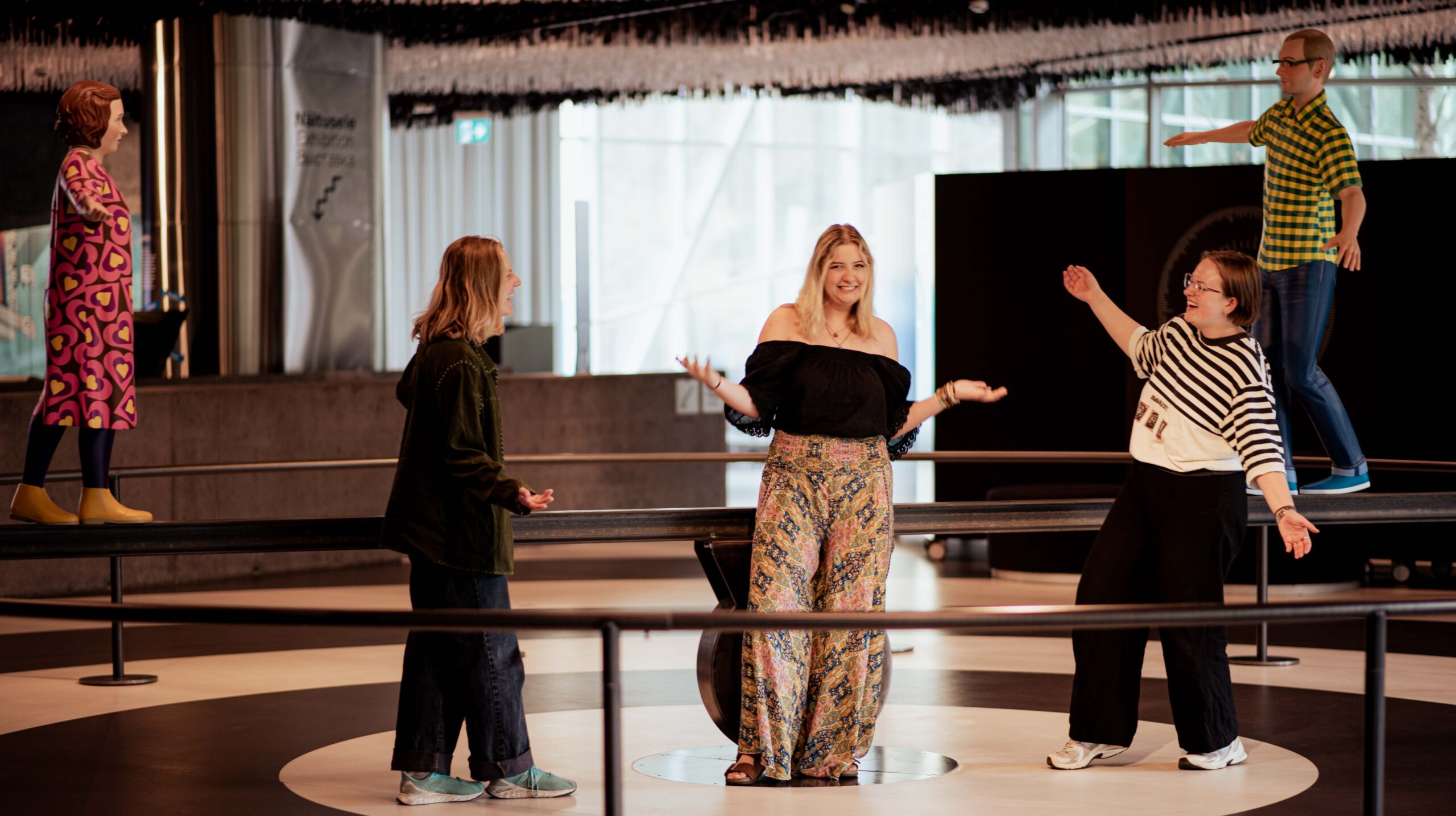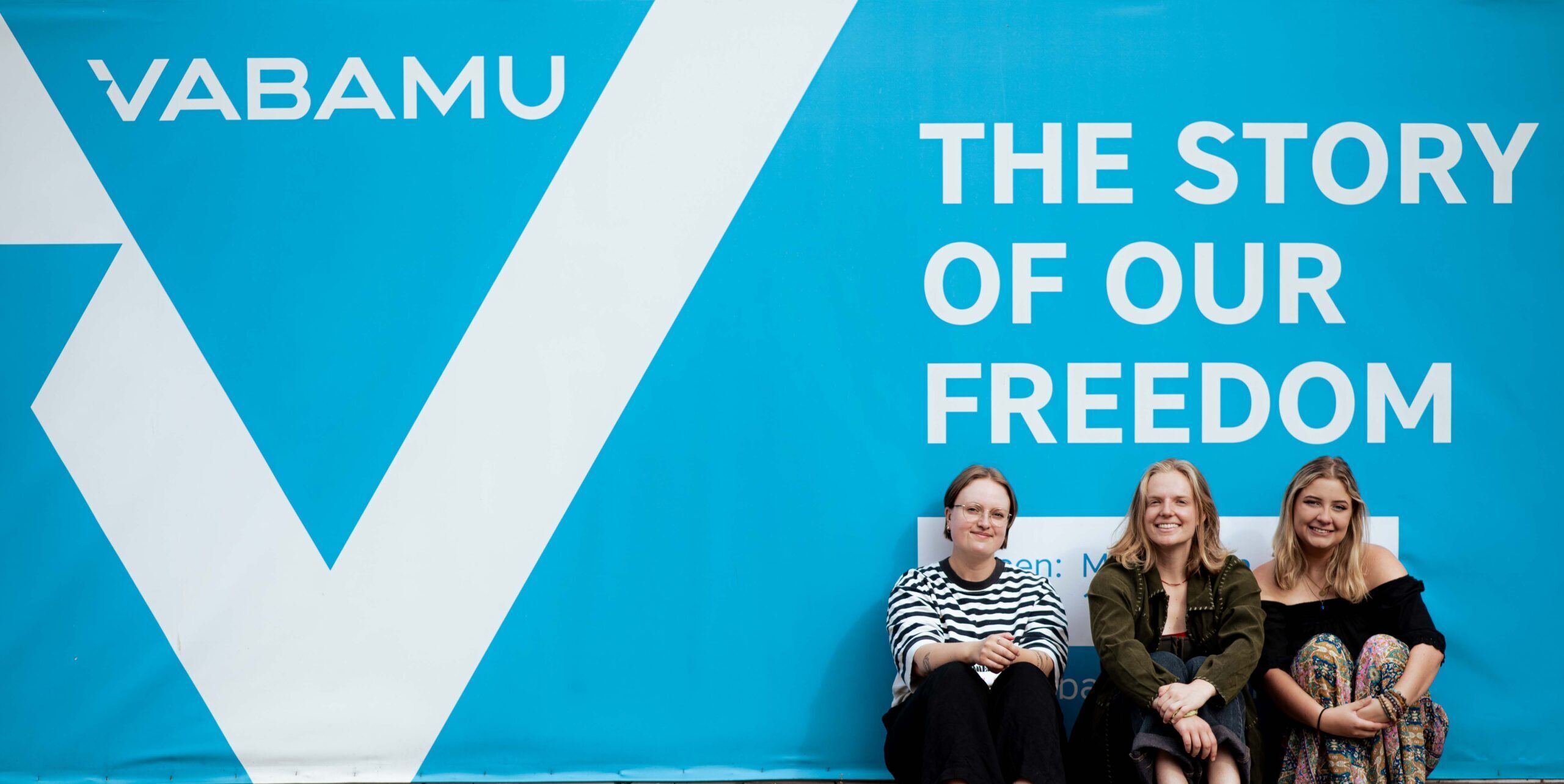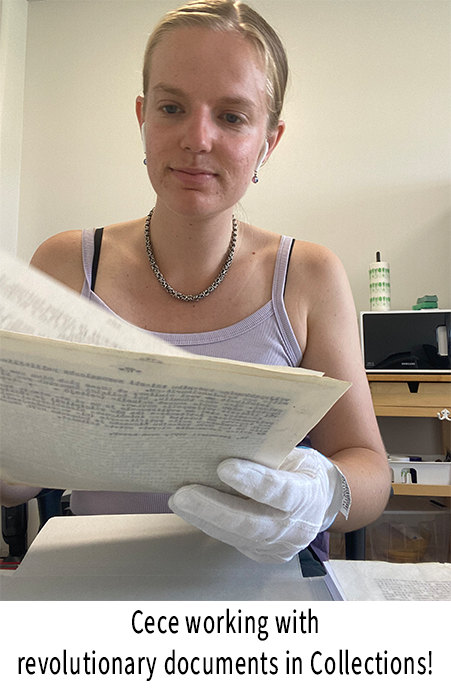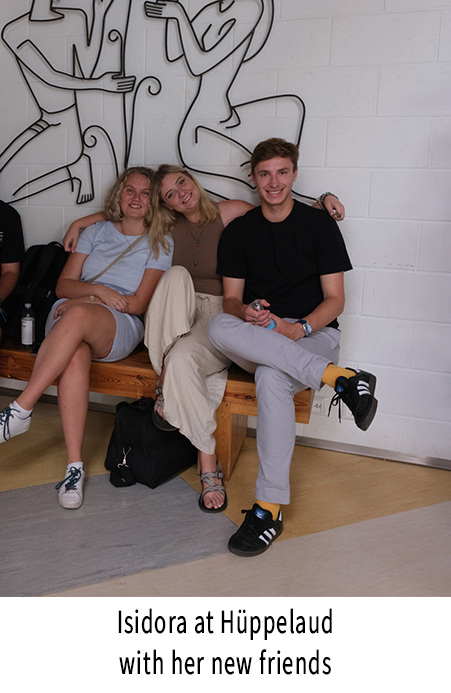Cece
My time working at Vabamu has been one of the most rewarding experiences of my life. We had the wonderful opportunity to live and work in Tallinn, but what made it all the more meaningful was that at Vabamu our job involved becoming immersed in the culture and history of Estonia. I especially appreciated Vabamu’s focus on personal narratives of the Estonian people that lived through turbulent 20th century Estonia. At first, however, there was one part of the internship that I was a bit apprehensive about. One of the new internship tasks was leading tours of the KGB prison cells. As someone that didn’t grow up learning the history of Estonia, I was worried that I would not be able to learn enough to confidently speak about it. While it did take a couple of weeks for me to fully memorize all of the information for the tour, it ended up being one of my favorite parts of the internship because I gained valuable insight into the personal stories of the people that were held in the prison cells and Estonian 20th century history. It was also rewarding to share what I had learned with tourists that are new to Estonia and help keep alive the memory of the people that suffered there.
In addition to tour guiding, I really enjoyed the breadth of this internship. Each day of the week we worked with different departments at Vabamu which allowed us to explore the many facets of museum work. As a result, we were constantly learning new things. Working with collections, we were able to hold history in our (washed and gloved) hands. We helped preserve underground revolutionary pamphlets resisting Soviet censorship, sports medals given to Estonian champions, and photographs of people deported to Siberia that they sent back to their families. With the curation department we did research on digital Estonia and wrote descriptions that will be used in an exhibit at Stanford in the fall. We also assisted the marketing team by doing interviews with patrons of the KGB prison cells to help inform their revamp of the exhibit next year and by working with hotels for flyer distribution. I loved each time we were able to work with a new team because it made the internship fresh and exciting.
Through our internship, we also had the opportunity to enjoy Tallinn’s other many beautiful and informative museums. Of the museums I visited, the design museum was a surprise favorite because although I don’t know much about design, it was incredible to see traditional Estonian handicrafts and original Estonian arts. In the end, the fact that I didn’t know much about design made the museum more enjoyable because it meant that I learned much more! Other museums I visited, such as the Estonian History Museum, the Kumu, and the Estonian Open Air Museum all provided an excellent education in how to build exhibits. I appreciated how all of the museums used a mix of interactive elements (aimed for children, but ultimately enjoyed by all), video elements, and more traditional exhibit set ups. Overall, through this experience I have gained a great, holistic understanding of museum work and will definitely use what I’ve learned here in the future!
Isidora
My first few days in Estonia were spent wandering around Tallinn’s beautifully preserved Old Town, going into alleyways, reading signs on statues, and eating various Estonian sweets.
Vabamu gave me first-hand experience of working at a museum, helping with exhibitions, going through collections, giving tours of the KGB Prison cells, helping with marketing, and working at Hüppelaud with the NOVA youth program; the possibilities were endless. I can not express how incredibly rewarding this internship was, giving me a beautiful glimpse into the world of museum work, curation, and youth education initiatives. Vabamu has its core principles in ensuring that the past of Estonia continues to be proclaimed to all, showing the high price many have sacrificed in order to establish democracy, and endeavoring to never repeat the past.
In collections, I was able to help preserve photographs of Miia, a fifteen year-old girlapart of the Sini-Must-Valge, a student organization that resisted Soviet occupation. Mia was one of five students who assisted in blowing up several soviet soldier statutes in 1949, and was captured and sentenced to ten years of hard labor in Siberia. Knowing her story is one thing, but being able to look through her photos and go through her written memories was an incredibly special experience. When I was repacking materials from Miia’s memory book, I found that she had also donated a piece of rope that was used to detonate explosives on the Soviet statutes. Her photos while in Siberia were those of normal scenes, of teenagers having fun and making silly poses, of them playing in fields, and most importantly; many of them displayed joy on their face. Life in Siberia was incredibly difficult, with only one third of those who were sent there surviving. Yet, seeing photos of Miia and her friends making the most of their situation in Siberia showed me Estonians’ resilience in the face of Soviet Occupation and how, even when in Siberia, resistance was still abundant and loud.
Going to different museums, such as the Latvian Museum of Occupation and the Estonian History Museum, further enhanced my experience in the Baltics by giving me a broad education of the region. I learned both about the inner workings of museum work and the history of freedom in the Baltic region, and it has enriched my professional and personal lives in ways I never could have predicted.
At Hüppelaud, I worked one-on-one with Estonian teenagers, designing different business models and prototypes. During my week in Viljandi, I gained so much from facilitating experimentation and helping visualize ideas into reality. I mentored a team that helped design a sustainable, biodegradable Olympic opening ceremony outfit for Team Estonia, helping them with the design process, material selection, and sewing.
Throughout my internship with Vabamu, I never once got tired of seeing the distinct architecture of Old Town or cheerfully greeting everyone at work with “Tere!” A piece of my heart will forever remain in Tallinn.
Maja
This summer I had the opportunity to spend two months at Vabamu, financed by the Estonian Foreign Ministry and EstDEV’s scholarship program for Estonian youth abroad. The internship has been very varied, including working with exhibitions, in the collections, and giving guided tours at the KGB prison cells.
One of my favourite parts of the internship has been spending time in the collections. Being able to read letters, documents and look at pictures and items from times past has been fascinating. I have also been able to specifically focus on items that might be of interest to my master’s thesis, which I am very grateful to Vabamu for giving me the time and space to do. Some interesting items have included very detailed travel diaries from the 1970s and 1980s, and letters from the founder of Vabamu, Olga Kitsler-Ritso to her father that she wrote as a student in Tartu in the 1930s.
One of my tasks regarding exhibitions has been translating an online exhibition into Swedish about the Estonians that had fled to Sweden and Germany in 1944 and then felt forced to continue further West in the late 1940s. This task was especially interesting to me, as it resonates with my own family history, since my grandparents escaped to Sweden in 1944. While they stayed there in the end, other relatives continued onwards, and one of the boats in the exhibition that made it to Canada was captained by my grandmother’s uncle.
The team at Vabamu have been very welcoming and friendly, and it was easy to feel at home right from the start. My interests have been taken into account when shaping the internship, and I feel that the staff at Vabamu have done their best to provide me with a great internship experience.
Another favourite aspect of the internship has been our so called “Museum Fridays”, visiting museums across Tallinn and Estonia. One of my favourite museums is the Estonian Museum of Applied Art and Designin the Old Town, which features design and art objects from the past 100 years in Estonia. Being able to learn about Estonian history also through art and objects, both more artistic such as tapestries as well as everyday items such as chairs and lamps, help provide insight into the last 100 years in Estonia.
While Tallinn and Estonia are familiar to me from having visited with my family numerous times, and living here for shorter periods, it was also interesting to explore the country through the eyes of my co-interns, Cece and Isidora, and the rest of the interns from Stanford who took part in the programme that Vabamu organised for them to get to know Estonia. Through this programme I was also able to explore new things, such as visiting the island Aegna and a cooking course at the Tartu nature house.
Through my experience at Vabamu I have been able to learn more about how museums work, from the perspective of collections, curating and marketing, and this experience will definitely be useful for my future and my goal to continue working with Estonian history in some capacity.


 Back
Back










